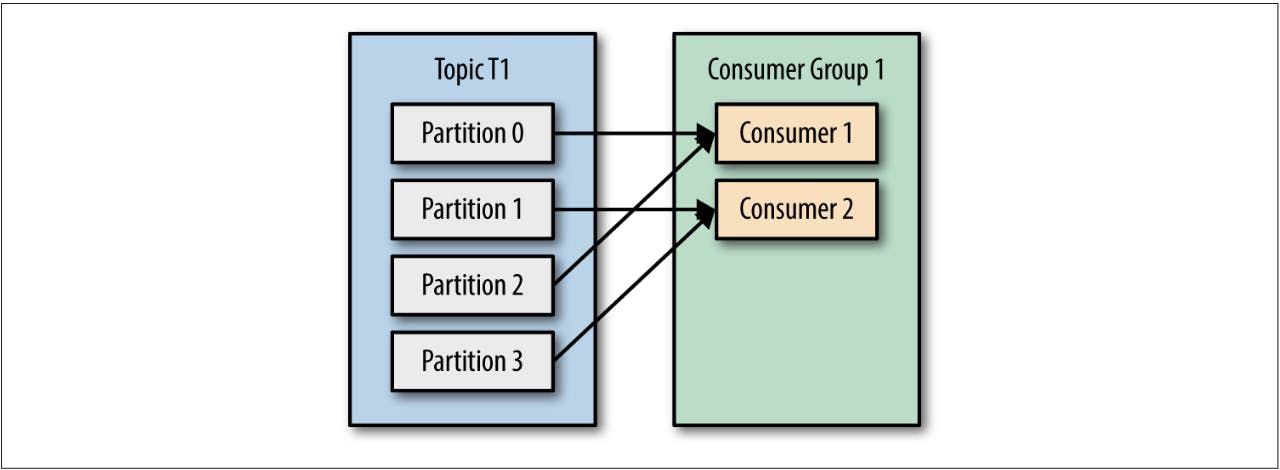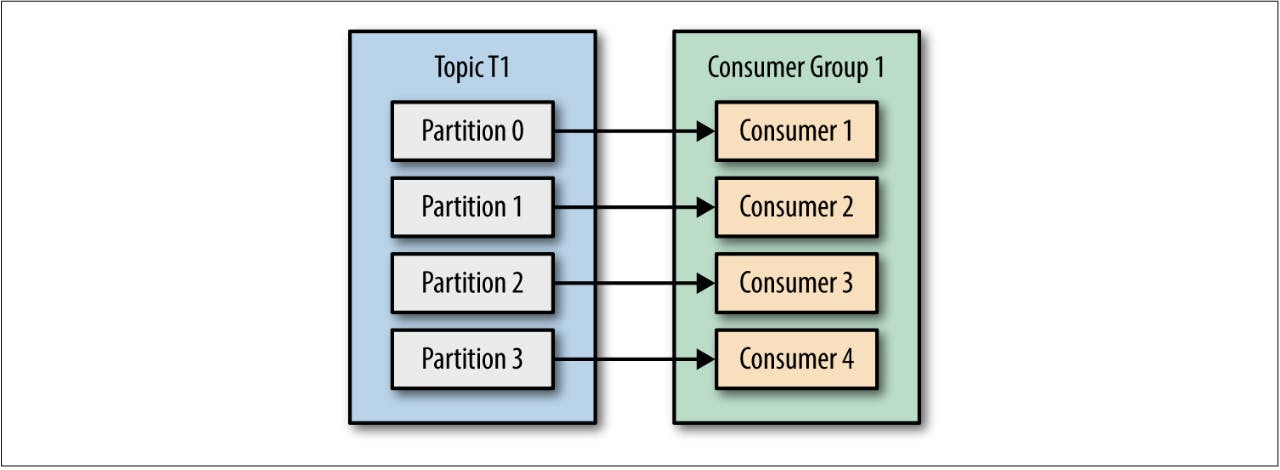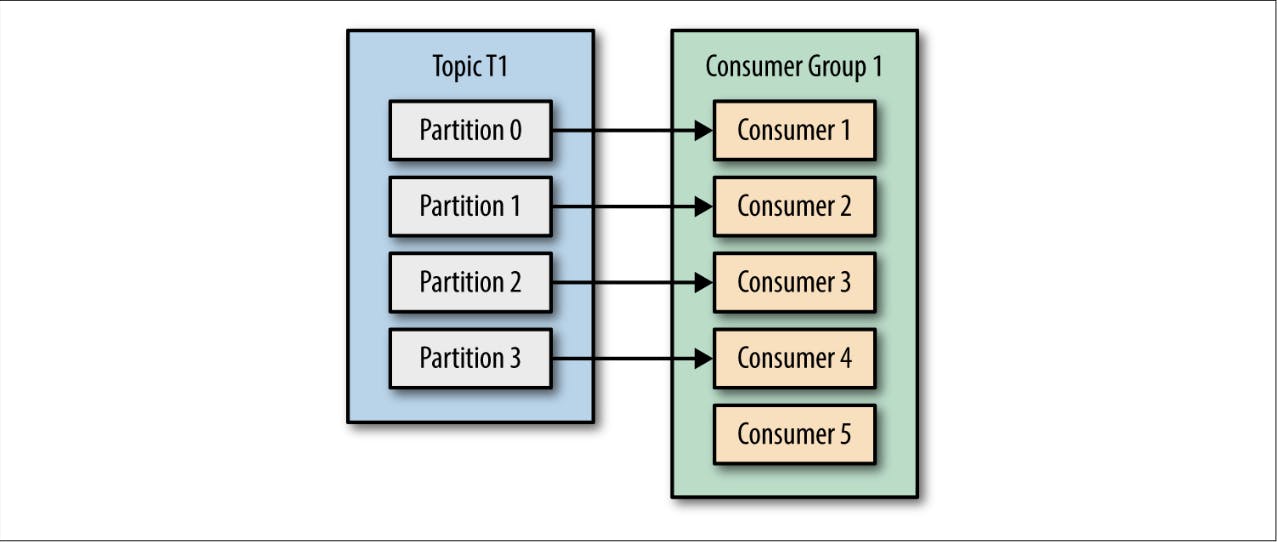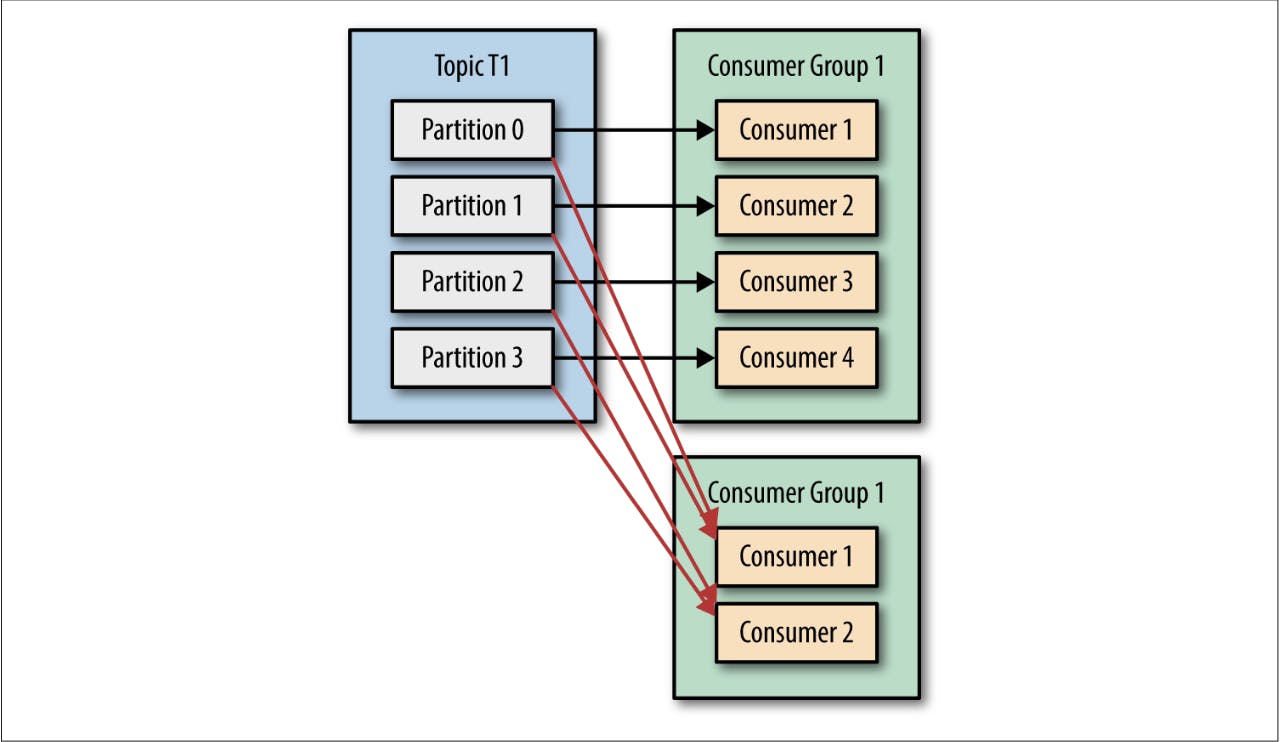Table of contents
No headings in the article.
Suppose you have an application that needs to read messages from a Kafka topic, run some validations against them, and write the results to another data store. In this case your application will create a consumer object, subscribe to the appropriate topic, and start receiving messages, validating them and writing the results. This may work well for a while, but what if the rate at which producers write messages to the topic exceeds the rate at which your application can validate them? If you are limited to a single consumer reading and processing the data, your application may fall farther and farther behind, unable to keep up with the rate of incoming messages. Obviously there is a need to scale consumption from topics. Just like multiple producers can write to the same topic, we need to allow multiple consumers to read from the same topic, splitting the data between them.
Kafka consumers are typically part of a consumer group. When multiple consumers are subscribed to a topic and belong to the same consumer group, each consumer in the group will receive messages from a different subset of the partitions in the topic.
Let’s take topic T1 with four partitions. Now suppose we created a new consumer, C1, which is the only consumer in group G1, and use it to subscribe to topic T1. Con‐ sumer C1 will get all messages from all four t1 partitions.

- If we add another consumer, C2, to group G1, each consumer will only get messages from two partitions. Perhaps messages from partition 0 and 2 go to C1 and messages from partitions 1 and 3 go to consumer C2.

- If G1 has four consumers, then each will read messages from a single partition.

- If we add more consumers to a single group with a single topic than we have parti‐ tions, some of the consumers will be idle and get no messages at all.

The main way we scale data consumption from a Kafka topic is by adding more con‐ sumers to a consumer group. It is common for Kafka consumers to do high-latency operations such as write to a database or a time-consuming computation on the data. In these cases, a single consumer can’t possibly keep up with the rate data flows into a topic, and adding more consumers that share the load by having each consumer own just a subset of the partitions and messages is our main method of scaling. This is a good reason to create topics with a large number of partitions—it allows adding more consumers when the load increases. Keep in mind that there is no point in adding more consumers than you have partitions in a topic—some of the consumers will just be idle.
In addition to adding consumers in order to scale a single application, it is very com‐ mon to have multiple applications that need to read data from the same topic. In fact, one of the main design goals in Kafka was to make the data produced to Kafka topics available for many use cases throughout the organization. In those cases, we want each application to get all of the messages, rather than just a subset. To make sure an application gets all the messages in a topic, ensure the application has its own con‐ sumer group. Unlike many traditional messaging systems, Kafka scales to a large number of consumers and consumer groups without reducing performance.
In the previous example, if we add a new consumer group G2 with a single consumer, this consumer will get all the messages in topic T1 independent of what G1 is doing. G2 can have more than a single consumer, in which case they will each get a subset of partitions, just like we showed for G1, but G2 as a whole will still get all the messages regardless of other consumer groups.

- To summarize, you create a new consumer group for each application that needs all the messages from one or more topics. You add consumers to an existing consumer group to scale the reading and processing of messages from the topics, so each addi‐ tional consumer in a group will only get a subset of the messages.
SOURCE: confluent-kafka-definitive-guide-complete